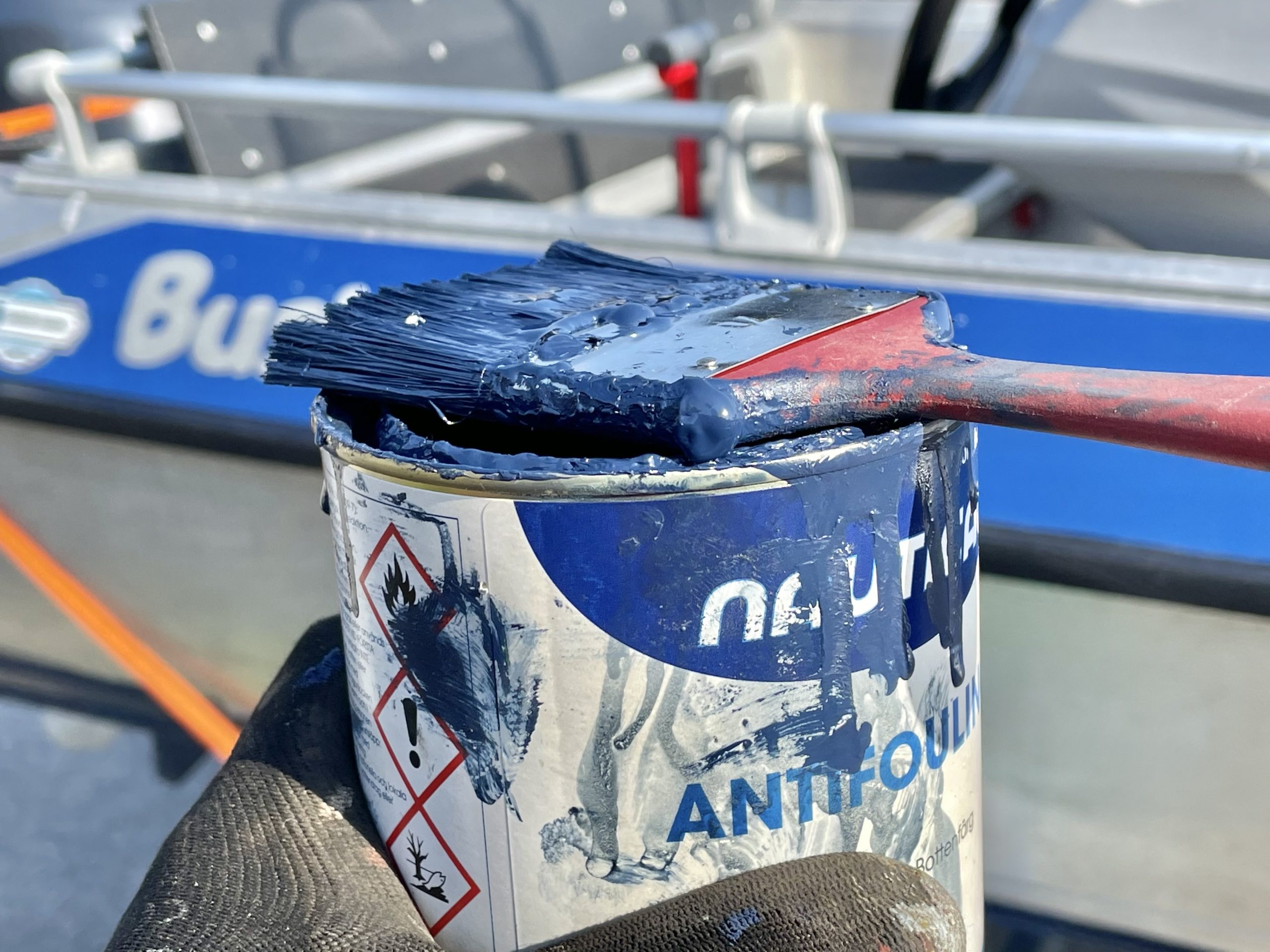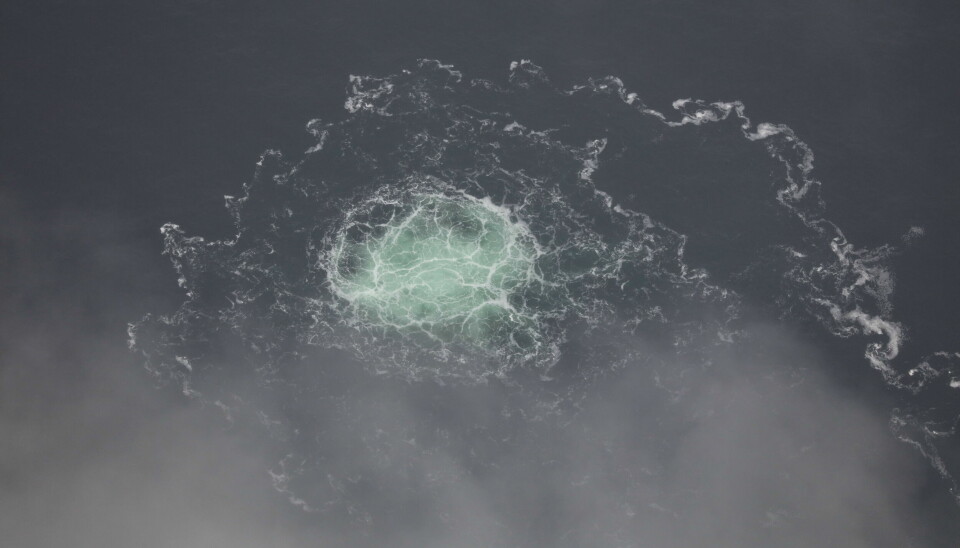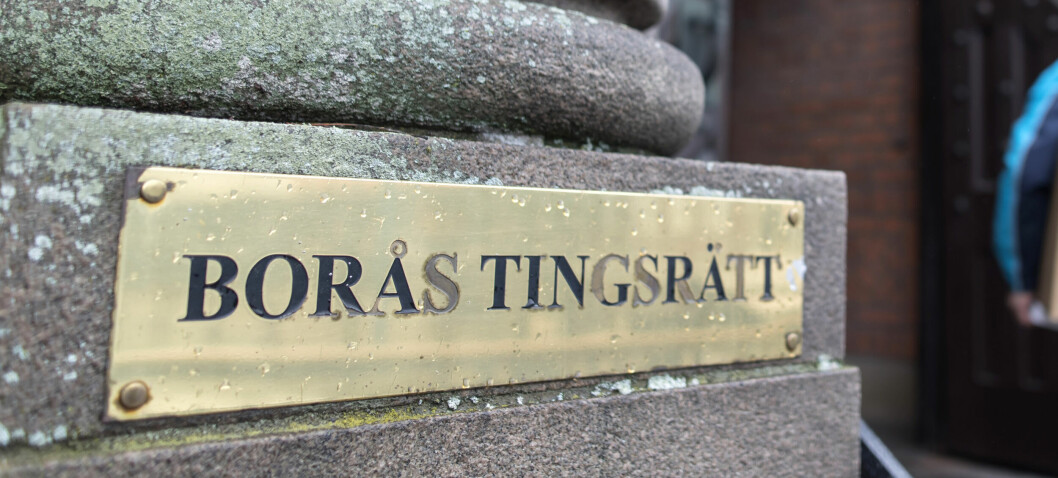Cayenne pepper and Vaseline – true or false about the base colors of recreational boats
This year’s boating season will soon begin – but the question is whether there will be less growth if you mix cayenne pepper in the base color or sprinkle Vaseline on the boat’s drive? Ny Teknik sorts out what is true, false – or illegal.
We have help Erik Ytreberg, Associate Professor of Maritime Environmental Science and Maria Lagerström, PhD in Applied Environmental Science.
Both work at the unit for maritime environmental science at Chalmers, where they study bottom paints, also called antifouling paints, which are usually painted on the leisure boats every spring. They also study the use of the colors of ships, in order to identify sustainable antifouling strategies for the shipping industry.
Many recreational boat owners paint the bottom of the boat for the summer season. The painting is done to reduce the amount of algae, mussels, barnacles and other things that get attached to the outside of the hull and grow.
A lot of growth, as it is called, gives the boat greater resistance in the water and draws more fuel.
Statement: Mixing cayenne pepper in the base color makes it more effective against growth
TRUE, but illegal
The experts: There is a US patent from 1995 which shows that capsaicin, the active substance of cayenne pepper, is effective against barnacles at a concentration of five percent. The substance is bacterial, which means that you avoid the first thin film – the film – on the boat bottom. However, there are no commercial boat products with capsaicin in them, which indicates that it may not be economically viable. If you as a boat owner yourself mix cayenne pepper into the paint to counteract growth, you are committing a crime, as it requires a permit to add so-called biocides. If all boat owners were to suddenly start pouring pepper in their base paint, we do not know what effects it would have on the environment.
Statement: Garlic powder is a good alternative to cayenne pepper in the base color
FALSE
The experts: There is no evidence that garlic powder would work against growth. In fact, if you mix something in the paint at all, it can make the paint work worse. This is partly due to the risk of making the boat surface more rough, which increases the risk of growth.
Statement: Mixing mercury or other leftover slats from the chemistry store into the primer is effective against growth
TRUE, but extremely illegal
The experts: 50-60 years ago, it was common to take a little what you had on hand when the bottom of the boat was to be painted. Lead, cadmium, arsenic are often used and these substances effectively kill all living things that approach the bottom of the boat, but at the same time it is super bad for the environment.
Statement: Copper-based primer is always effective against growth
FALSE
The experts: In Lake Mälaren, toxic bottom paint is forbidden, and in a test, we painted different bottom colors on a plexiglass sheet and immersed it in Lake Mälaren’s water for five months. The result was that it actually became more growth on the copper paint than where there was no paint. So apart from the fact that it is forbidden to use copper paint in Lake Mälaren, there is no use whatsoever with it.

Photo: Anders Frick
Statement: There are no effective alternatives to copper paint
FALSE
The experts: There are several options on the market today, but the copper color is dominant. We would like to see the boat owners be braver and try something else, because the biggest challenge is to break habits and traditions.
Statement: Silicone paints only work if the boat is running over a certain speed
FALSE
The experts: Silicone paints create a smooth surface and according to the myth, the boats need to run fast enough for barnacles and other growths to fall off with the help of the friction against the water. We have tested and found that silicone paints also work for boats that are completely still. In our test, we saw that the silicone paints were even more effective than ship paints. The disadvantage of silicone paints is that you must first remove old primer because the surface must be completely smooth when painting. So more preparation is required, but at the same time you do not have to paint the boat every year when you have that type of paint.
Statement: If you spray Vaseline on the drive, it keeps barnacles away
TRUE
The experts: Experiments were made comparing the growth on a Vaseline-coated surface – with and without cayenne pepper. There it turned out that Vaseline worked, but that the cayenne pepper did not improve the result any further. At the same time, it is very difficult to stick to Vaseline and the question is how long it lasts. We have no data on this, but it would be interesting to find out.
Statement: Approved primers are not environmentally hazardous
FALSE
The experts: It is difficult to say how environmentally hazardous bottom paints are, because they create long-term problems in large parts of our watercourses rather than acute problems in the local environment. The authorities’ approval for the sale of primer often applies for ten years and is based on the toxic leaks that the paint manufacturer has stated in its application. In our research, however, we have been able to see that most of the paints that are available to buy in stores today often leak much more toxins than what the manufacturer has stated in its application. This is probably an important explanation for why the toxin levels today are too high in many marinas.
Statement: Ships have more toxic bottom colors than recreational boats
TRUE
The experts: Ships have a large hull area, but the number of recreational boats is much larger. This means that in the Baltic Sea, the total hull area for recreational boats is approximately as large as for ships. Bottom paint for ships often has slightly higher levels of, for example, copper and more types of approved biocides than for recreational boats, and the vessels emit more toxins in total: In the Baltic Sea, about 400 tonnes of copper per year come from ships and 60 tonnes of copper from recreational boats. However, the recreational boats move more often in and near more sensitive environments than the ships do at the same time as the recreational boats’ emissions mainly take place during the spring and summer when aquatic organisms reproduce and are most sensitive to toxins.
Statement: You need different bottom color on the west coast compared to the east coast
PARTIALLY TRUE
The experts: Many west coast paints leak too much poison in relation to how much is actually needed. If they had leaked “just” a lot of poison, you would have needed different bottom paint on the west coast compared to the east coast, but due to the unnecessarily high poison leakage, many cheese coast paints also work very well on the west coast.

Photo: Anders Frick
Statement: You must repaint the boat every year
FALSE
The experts: Often the base color lasts longer than you think. We would urge boat owners to try not to paint new every year, because often there are enough poison reserves left in the form of several underlying layers of paint. It is therefore a false myth that you have to paint the entire bottom every year – often it can be enough to only paint particularly exposed areas on the boat, such as along the waterline.
Statement: It is better to wash the boat in a boat wash than to paint with primer
TRUE
The experts: This is absolutely true, especially on the east coast. If you have access to a boat wash and do not suffer from too severe growth, we strongly recommend washing instead of painting. Many boat clubs have banned copper paints and instead offer their members laundry. As a bonus, you avoid the soil contaminants that often occur when you scrape away old poison paint from the boats in autumn and spring.



